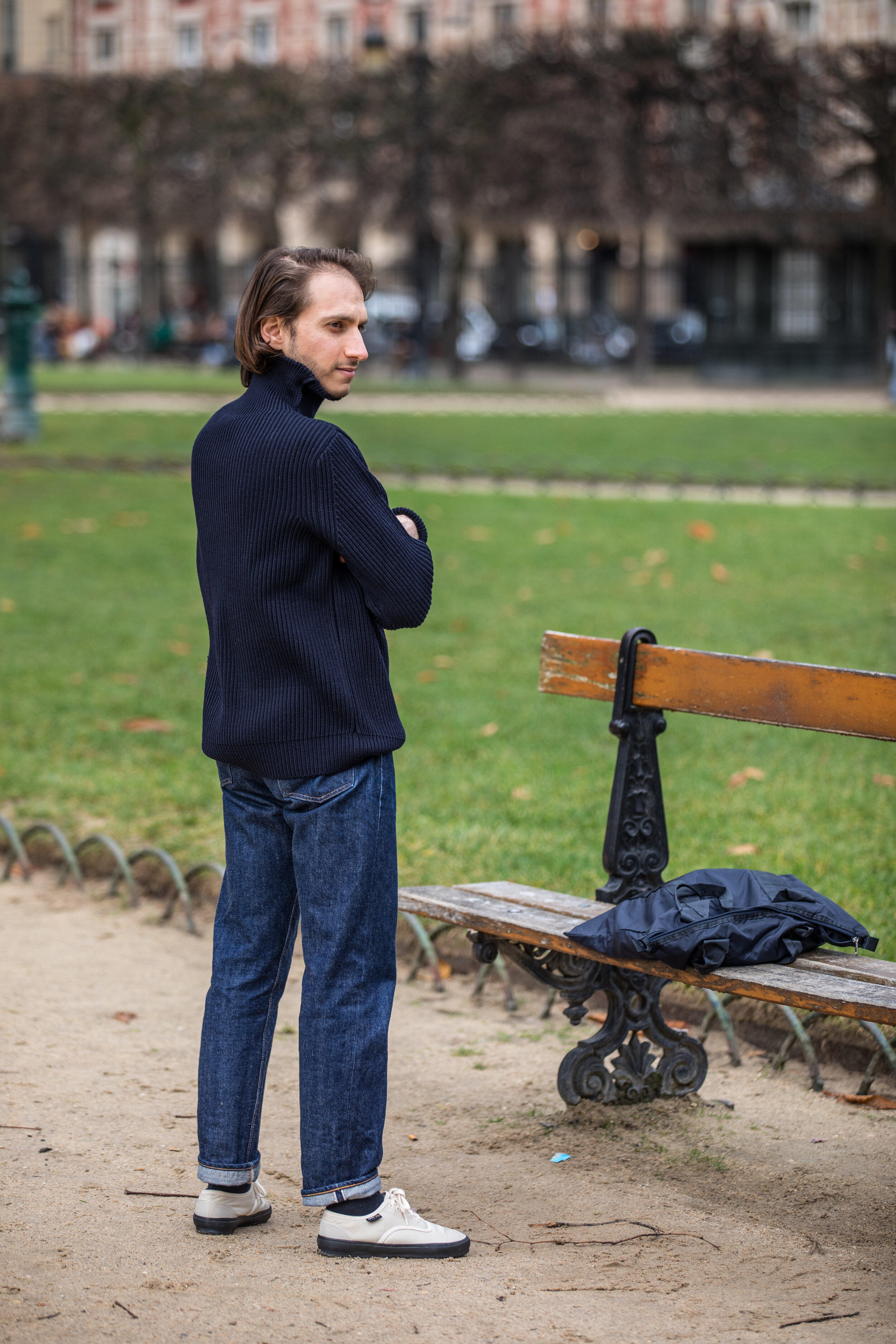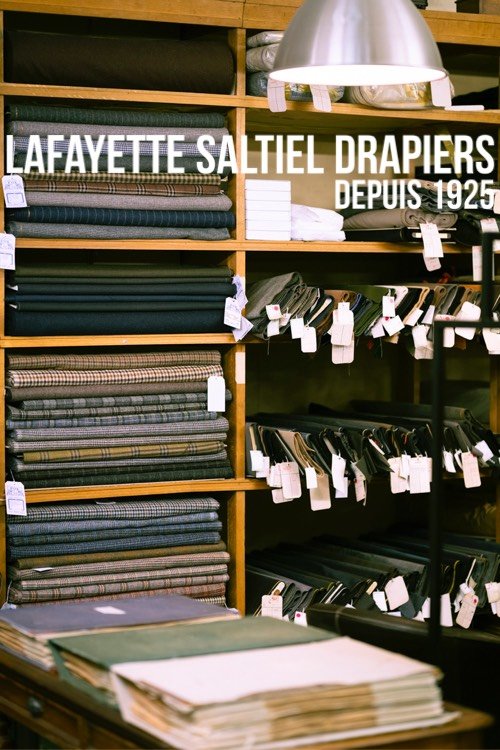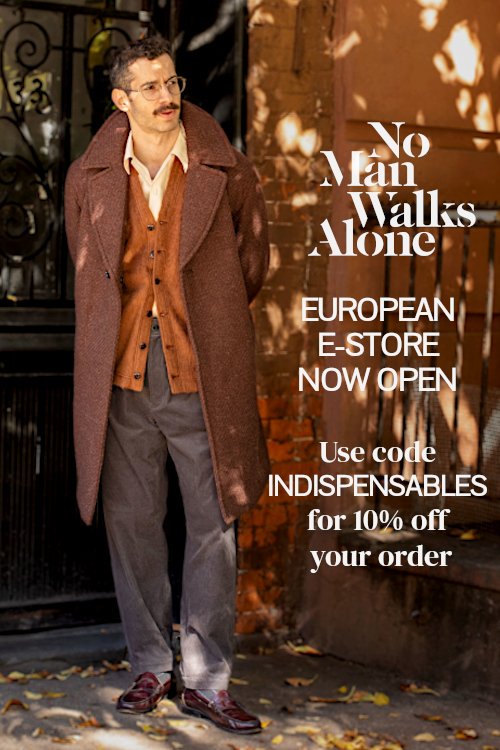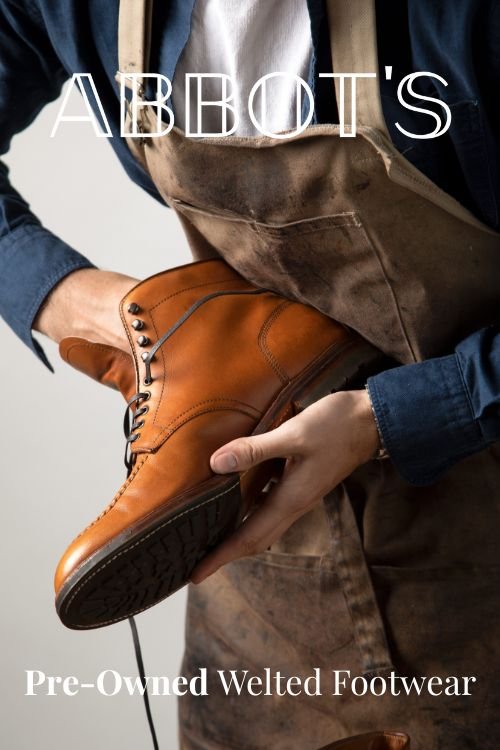Andersen Andersen
/Note: At our request, Andersen Andersen agreed to send us the 3 sweaters that you will discover in this article.
Andersen Andersen
The world's best sailor sweaters
Texte : Marcos Eliades
Photos : Thomas M.
“The sea does not boast of being salty" says a Creole proverb. The obvious things in life are not told but lived, one might say instead.
As a city dweller by adoption but an islander by birth, the sea has a special place in my heart. One of my most distant childhood memories is of the beach at Polis, in my home country of Cyprus. The waters are crystal clear and the sand fine. The Sun warms up the sporadic pebbles on the beach, which stretches out over a calm bay. For guaranteed freshness in hot Summer days, my favorite outfit are swim trunks, a Sunspel piqué polo shirt and a seersucker cap.
The beauty of the sea is that it is never the same depending on where you are. I discovered the Normandy coast more than ten years ago thanks to my best friend. Wild, majestic and appeasing coasts. A completely different scenery of my familiar Mediterranean! During these coastal walks, I discovered the pleasure of wearing Navy inspired clothing adapted to this harsher environment.
A good sailor sweater can quickly become a comforting garment. The Danish brand Andersen Andersen is steadily sailing in this direction.
Let’s have a closer look.
A sailor’s storY
In 2009, Catherine Lundgren-Andersen and Peter Kjær-Andersen, a real-life couple, decided to create the "best sailor sweater in the world". This ambition took root after finding a sailor's sweater in a vintage store in Denmark. The piece was marked by time, but of incomparable beauty - as vintage clothes often are.
The couple was conquered. Catherine and Peter founded Andersen Andersen in the process and set out to (re)conquer this mythical sailor sweater that has stood the test of time. Authentic marine sweaters do not have a front or back, making them easier for sailors to put them on during nightime. The Marine sweaters are made of 100% merino wool. A thick and rough wool with a tight weave that resists abrasion and humidity. Essential characteristics that can be found in the sweaters of the Danish brand.
The merino wool of these Danish sweaters are from Uruguay and Patagonia. The wool then travels to Northern Italy where the spinning, knitting, assembling and dyeing factories are located. The sweaters are all fully-fashioned, which means that all the knitwear pieces (front, back, sleeves, collar…) are knitted in the desired shape via decreases / increases. This process avoids wasting material and reduces the number of operations.
Knitwear for every occasion
The beauty of Andersen Andersen lies in the plurality of the offer, especially in the weight of the sweaters. Thus, lighter pieces are mixed with thicker and heavier ones, more adapted to a harsh and humid winter.
For this review, we have the opportunity to present three landmark sweaters from the collection. From the thinnest to the thickest.
SEAMAN TURTLENECK
Gauge 7
Jersey stitch
2 ply
Made in Italy
100% wool
SAILOR TURTLENECK
Gauge 7
Half Cardigan stitch
4 ply
Made in Italy
100% wool
NAVY TURTLENECK
Gauge 5
Full Cardigan stitch
6 ply
Made in Italy
100% wool
The first sweater is the "Seaman Turtleneck", a turtleneck knitted on a 7 gauge flat knitting machine with 2 threads extra spun merino wool for a thin and durable quality. It is knitted in a jersey point: a method often used in lightweight knitwear garments, may they be t-shirts, polos or sweaters.
If you look closely picture number 1, you’ll notice the “bartak” in the sleeves. For those of you who do amateur sewing, it references a sort of zigzag point that Andersen Andersen adds to reinforce all the assembled pieces. Pieces that are assembled with linking machines and not by a “simple” sewing machine. From a technical point of view, the sweater has all the characteristics of a high-end garment.
It is the thinnest sweater of the selection. In a radiant yellow, the turtleneck of this model is often left unrolled because it is slightly smaller than the two others. Needless to say, yellow and its variations are not difficult to wear, especially in winter. They bring the light out of a sometimes dull outfit. Consider yellow !
The second sweater is the "Sailor Turtleneck”. Knitted on a 7 gauge flat knitting machine with 4 threads extra spun merino wool. The sweater is thicker and heavier than the first one and is perfect for winter. I really like the visual aspect of Half Cardigan stitch, very “rounded”. The difference with the Full Cardigan stitch is easy to recognize: the front and back are not the same. In french, these two forms of knit fabric are said to be double stitch. They are thicker, heavier and more stable than the 1x1 rib.
Wear it for instance under a Sierra Designs down vest in a Kelly Green color, look for the article on the website. The sweater is chosen here in an ecru. At the risk of repeating oneself, white and ecru are colors that are absolutely appropriate for winter. We fully encourage them in an outfit. If you're unsure on trying on the white/ecru five-pocket pants, have a look at some of our prior articles on Crockett & Jones or Village Paris.
The third sweater is called the "Navy Turtleneck". In a deep navy blue, this turtleneck is knitted on a 5 gauge flat knitting machine with 6 threads extra spun merino wool. It is the thickest and heaviest of the three sweaters. It is thus perfect to wear alone under a coat, for example a Balmacaan overcoat in Harris Tweed from Beams+. All sweaters have extended sleeves with a hole at the end so you can unroll them and insert your thumb, which will protect you from the cold. In terms of style and when it's not too cold, we prefer to roll up these sleeves and keep them that way.
These three sweaters form a winning combination marrying both City and Sea. Sweaters adapted to cold temperatures that vary from one day to another, allow a greater heterogeneity and choice of clothing. My obsession for raglan sleeves is not satisfied by these sweaters but their overall quality is fully worth it. The tightly knitted wool leaves me no doubt in its beautiful aging and patina over the years. Eventually, the Andersen couple wanted to intrinsically capture the spirit of a vintage Navy sweater while modernizing and accompanying it with modern techniques based on a century-old know-how.
A sweater with a Scandinavian heritage
A garment in 100% merino wool knitted in Italy and imagined by the descendants of the Vikings, what more could one ask for?

















